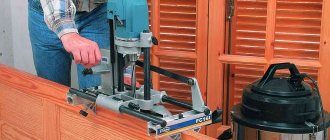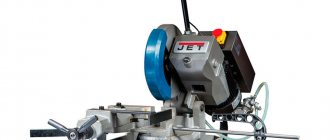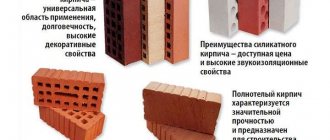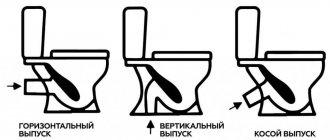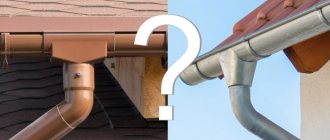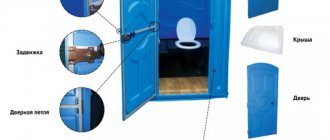| Place | Name | Characteristics in the rating |
| The best test detectors for hidden wiring |
| 1 | Mastech MS8902B | Best quality |
| 2 | Phase GK51 | The simplest device |
| 3 | STAYER Master Topelectro | Deep Scan |
| 4 | LA-1013 CEM-Instruments | Professional instrument with amplifier |
| 5 | NWS 819-4 | Widest range of detectable currents |
| The best hidden wiring detectors with positioning |
| 1 | Bosch GMS 120 Professional | The best choice |
| 2 | Mastech MS6818 | Maximum information content |
| 3 | Multi Stud Finder | A simple device without unnecessary options |
| 4 | ADA instruments Wall Scanner 80 | The best detector with tree detection capability |
| 5 | Practice Expert DU-100 M | Informative display |
A hidden wiring detector is a tool that can find wires and other elements in the wall. There are two types of detectors:
- testers, that is, reacting to the presence of a phase in the network at a distance;
- and pinpointers, that is, metal detectors that detect the presence of wires, regardless of whether there is voltage on them or not.
Detectors from the second category are, in fact, metal detectors, but with a limited range. They determine the location of metal elements and are also able to determine their type. Some tools can also detect wood. Unlike full-fledged metal detectors, detectors have a shallow search depth. Most often it is limited to five centimeters, but they are able to determine the location of the wire with an accuracy of a centimeter.
Test indicators have the same characteristics as regular indicators, the only difference being that they find the phase at depth. They cannot determine the location of the wire with accuracy, but they are much cheaper than pinpointers. Also, testers do not distinguish the type of metal, and if voltage is not applied to the wire, it will not be detected at all. When choosing a wiring detector, you should pay attention primarily to the search depth and positioning accuracy. But manufacturers often overestimate this parameter, and in order to find the truly best device at the most attractive price, you need to carefully study our rating, which includes the 10 most interesting options.
The best test detectors for hidden wiring
Tester detectors determine hidden wiring in the wall by the presence of a current phase in it. If the wire goes to ground, the indicator will not detect it, as in the case of no current. This tool is often used not to search for wires in the wall, but to determine the location of damage to the wiring. If current begins to be lost, the instrument signal will become weaker and disappear completely if there is no phase. Thanks to this device, you do not have to completely rip out the wiring from the wall to find the location of the damage.
comparison table
If you have not yet decided which hidden wiring detector to buy, the following table will make your choice easier. It lists the leading characteristics of the models reviewed and their average price.
| Model | Electrical wiring detection depth, mm | Ferrous metals, mm | Non-ferrous metals, mm | Wooden structures, mm | Average price, rub. |
| Control Drill Check | 40 | 40 | 20 | n/a | 990 |
| Mastech MS6906 | 75 | 50 | 30 | 30 | 4 006 |
| ADA instruments Wall Scanner 80 | 50 | 80 | 60 | 20 | 3 490 |
| BISON Professional DX-750 | 100 | 80 | 3 650 | ||
| ELITECH D 100 | 4 500 | ||||
| Bosch GMS 120 Professional | 120 | 38 | 6 389 | ||
| CEM LA-1012 | 2500 | n/a | n/a | n/a | 18 700 |
The best hidden wiring detectors with positioning
It is not always the case that the wiring that needs to be found in the wall is live. A test indicator is not suitable in this case, and only a positioning tool will cope with the task, which not only finds metals in the wall, but distinguishes them from each other. With such a device it is impossible to confuse a nail and a cable; moreover, they often have a wood search function, which is very convenient if you need to find a block under the trim in order to hammer any fasteners into it. Such devices are more expensive than testers, but there are also quite budget models, albeit with limited functionality.
What to look for when choosing
Before reading this rating, it should be clarified which criteria you should pay closer attention to. From a wide list of device characteristics, you should be primarily interested in the following:
- Detectable materials. Most of the models presented in the rating are capable of detecting electrical wiring, metal fittings, wooden sheathing or other frames. Some can “find” plastic (water and sewer pipes).
- Depth. In this case, everything is extremely simple - the technical characteristics of each model indicate the limiting values within which it can detect certain materials. In this case, it is recommended to purchase a device with a so-called “deep” reserve.
- Auto calibration. This implies automatic adjustment of the sensor to certain operating conditions. Detectors belonging to the budget and mid-price ranges require auto-calibration. For professional options, such actions are not performed, since their operating principle is completely different.
Areas of application of indicators
The scope of application of the IPS depends on the configuration of the device and its sensitivity.
Basic models of combined detectors can be used for the following purposes:
- identification of hidden electrical wiring in ceilings, walls, floors;
- detection of electrical cable breaks;
- correct connection of electric meter phases;
- determination of phase wire;
- detection of ungrounded equipment;
- checking the serviceability of fuses and fuses;
- detection of locations of metal reinforcement in the wall,
MS8902B Mastech
MS8902B Mastech is a compact and reliable assistant; the small size of the device allows you to store it in your pocket. The device quickly and efficiently determines the location of wiring (cable from 12 to 600V) in a wide variety of materials: concrete, brick, drywall. The detector is also used as a metal detector, however, in this case the detection depth will then be only 2.5 cm. The sensitivity of the device can be adjusted; at minimum sensitivity, the device easily determines phase and zero in a wall socket.
Advantages and disadvantages
minimum weight, compactness (like a felt-tip pen); ease of operation; versatility; detects wiring that is not energized; increased scanning range; several operating modes; low price.
the need to re-configure and calibrate the detector every time after switching off; for domestic use.
What types of devices are there?
The indicator is a small-sized mobile device, the weight of which does not exceed 200 grams (which is why the device is convenient to carry with you).
It can be useful for both a professional electrician and an ordinary apartment owner. Thanks to the device, it will be possible to find wires and pipes not only under a layer of plaster, but also under tiles and other finishing materials that hide them. Various types of devices are produced to detect electrical wiring. Their main differences are in the principle of operation and functionality.
Most indicators work on the principle of a metal detector; they signal if there is metal in the wall. This happens due to the magnetic field created by the device. The inconvenience is that it reacts to absolutely all metal objects, and not just to hidden wiring, therefore, if fittings are built into the wall, the device will work.
It is most convenient to detect wiring in the wall using indicators or detectors. Such devices detect electromagnetic fields created by current as it passes through conductors.
In order for the indicator to give a signal, there must be voltage in the network. If the wall is wet, devices of this type will not be useful. Moisture tricks the indicator by reflecting its electromagnetic field, causing it to give erroneous readings.
It is better to choose universal devices for searching electrical wiring. Their distinctive feature is the ability to work in several modes, thanks to which you can not only determine whether there are metal objects in the walls, but also search for hidden wiring separately. If it is possible to switch modes, then you can quite accurately calculate where exactly the cable is located. The devices can even find wood or plastic if the material is wet or filled with water. Such equipment is considered professional and costs an order of magnitude more than simple household indicators.
According to operating principles
The main division of hidden wiring indicators occurs according to the physical principles on which their work is based.
There are the following types of detectors:
- electromagnetic;
- metal detectors;
- electrostatic;
- combined devices.
Electrostatic detectors are able to detect live wires without passing current through them. They have a low price and are easy to use. Non-metal detector detectors can also be expensive if they have built-in high frequency generators. Devices are connected to the network, and then their fluctuations are detected by sensors
With the help of electrostatic detectors, it is easy to detect cable breaks. The disadvantages of these devices include high sensitivity to induced electromagnetic interference. The normal operation of detectors can be disrupted by routers, microwave ovens, computers, and televisions connected to the network.
Electrostatic indicators are also not suitable for locating wiring in damp walls and metal-reinforced structures.
Electromagnetic ICPs can only detect wires carrying current. For budget models, the minimum load on the network for the device to operate correctly is 1 kW. That is, using such a detector it will be almost impossible to determine the wiring going to lamps and chandeliers. The advantage of such devices is their high accuracy, which allows you to track the location of an electrical cable down to a few millimeters.
Metal detectors in their pure form are rarely used as wiring indicators because they react equally to copper pipes or wire, metal fittings, nails and wire clamps.
In ICP, metal detectors are typically used to confirm weak or intermittent signals received by other sensors.
A metal sensor helps to find deep wiring if it is reliably known that there are no other metal elements under the analyzed surface
Combined hidden wiring indicators are expensive, but also have good functionality. By using multiple detection methods simultaneously, these devices provide high operating efficiency. In addition, combined ISPs are often equipped with additional functions that professional electricians need.
Inexpensive electrostatic indicators are quite suitable for household use; they are enough to identify surface-lying residential wiring.
According to performance characteristics
Hidden wiring indicators have a lot of structural and functional differences, so they can be divided into several categories.
According to the scope of application, ISP are divided into:
- household;
- professional.
Household detectors usually do not contain metal sensors, so their use on reinforced walls is highly effective. The cost of the simplest devices starts from $5. They are equipped with one sensor, as well as a light or sound indicator for detecting electrical wiring.
Compact devices for detecting hidden wiring rarely have adjustable sensitivity and greater depth of action, so they are rarely used by professionals. Some professional models can even detect cables at a depth of up to 150 mm with an accuracy of 5 mm. Their cost can reach $500-600, with the same dimensions as household detectors.
Wiring detection indications can be of the following types:
- sound;
- light;
- graphic;
- combined.
Light and sound indication is realized using an LED or an audio speaker, respectively. Sometimes signal intensity correlates with the power of electromagnetic radiation. Graphic indication is displayed on the liquid crystal display.
The light indication on combined devices may differ in color, depending on the detection of a live or de-energized wire
By appearance, ISP can be divided into:
- cylindrical;
- flat.
Cylindrical devices are usually an indicator screwdriver with the function of detecting hidden wiring. Such models are low-functional, but also cheap. Screwdrivers are capable of detecting electrical cables usually at a depth of no more than 2 cm.
If the wiring in the apartment was laid superficially in a groove, then the cheapest detector model will be enough to detect it. The cost of the detector depends largely on the depth of detection of hidden wiring and additional functionality. Therefore, you should study the operating principle and scope of various indicator models.
Detector design
The basis for the manufacture of this device, like any other electronic product, is a circuit diagram. Before making a detector for hidden wiring with your own hands, let’s understand the circuit diagram of this device. On the Internet you can find a large number of various schemes. The diagram presented below is simple, which in turn makes the manufacture of the device easier and more cost-effective.
A small number of components does not always mean poor performance of the device. Quite the contrary, because we all know that the simpler the mechanism, the more reliable it is. In our case, the absence of a large number of components will help to avoid difficulties in manufacturing, as well as subsequent configuration of the device.
Kraftool GMS 120
Kraftool GMS 120 is a universal detector for detecting hidden wiring, ferrous and non-ferrous metals, as well as wood in walls. And this device copes with its task perfectly, very accurately determining the location of hidden objects in the walls. Its maximum detection depth for ferrous metals reaches 12 cm, non-ferrous metals – 8 cm, wiring – 5 cm, and wood – 2 cm.
The device functionality includes an automatic calibration option and an automatic shutdown function to save battery power.
Control is extremely simple and is carried out using 3 buttons. The device will notify you of the detection of hidden objects with audio and digital indications, as well as a message on the screen.
The Kraftool GMS 120 itself is quite compact and well-built. Included with it you will receive a case for convenient storage and transportation, as well as a lanyard that is attached to the body for convenient carrying of the device on your hand.
Those who have already tested this detector in action speak positively about it, noting the high detection accuracy and low cost. So. If you need an inexpensive detector that can find wiring, metals and wood at great depths, then you should pay attention to this model.
- Magnetic metals: up to 120 mm.
- Non-magnetic metals: up to 80 mm.
- Electrical wire: up to 50 mm.
- Wood in plasterboard: up to 20 mm.
- Power: batteries.
- Auto power off.
How to use
Using the detector is not difficult.
On its panel there is a signaling device (usually an LED, but there may also be a telephone speaker to sound a sound signal). The antenna of the device is moved along the wall and the indicator is observed (or listened to if the signal is audible). When the device detects wiring or structural components, the indicator will flash or make a sound. All that remains is to determine the routing and direction of laying the wires.
Depending on the design, the device may have different capabilities.
Using the same usage techniques, you can use different functions:
- indication of hidden objects of various types (wiring connected to the power source, magnetic and non-magnetic metal, non-metal);
- determining the accuracy of the object indication as a percentage;
- temperature measurement;
- determining the center point of metal objects;
- search for wooden inserts.
Expert opinion
Makhinov Vladimir Konstantinovich
Electrical Communications Specialist
The amount of functionality is determined at the time of purchase of the device. Please note that additional options significantly increase the cost of the device. Therefore, you need to know exactly what features will be used in order to pay only for the functions you need.
Removing wallpaper
If you are carrying out a major renovation at home, and the current state of the walls and wallpaper does not bother you too much, you can simply rip off all the excess from the wall, right down to the base (brick or concrete). Old grooves can then be visible visually, or palpable by touch, thanks to bulges or, conversely, characteristic indentations.
If the wall is not plastered at all, and there is bare concrete under the wallpaper, then the cable grooves will be 100% visible even to the naked eye.
Cassette player
Solder a flexible cable to the player head (you can take it from a USB cable). Turn off the motor in the player (less noise, and batteries are saved). Connect the load to the wiring. Press the Play button and move the head of the player to look for the place where the greatest hum is generated. True, the sensitivity of this device is quite low. When removing wires from 1 cm and further, especially under plaster, the device almost does not react.
Checking work
In order to accurately determine the location of hidden wires, you should first learn how to use the indicator. To do this, you need to try working with it on open wires, pipes, and other elements. This will help you understand when and to what objects the device emits a signal.
Before making a purchase, you should test the indicator in a store. Any switched on electrical appliance is suitable for this. You can use its wire for testing. The device must be tested at different distances. The wire can be covered with a board or some plastic object. If the detection was successful, then you can safely buy the indicator you like.
Bosch UniversalDetect
Designed to search and detect hidden wiring. Professional level detector. Quickly and accurately detects wiring with a frequency of up to 50 Hz. The device also detects pipelines, fittings, wooden and metal structures. The body is made of high-quality plastic with rubber pads - convenient and practical to use. Illumination and sound indication significantly improve the usability of the device in the dark or in low light.
Advantages and disadvantages
fast and high-quality detection of wiring; convenient to use; high sensitivity; controlled via touch screen; detects both live and non-energized wiring.
case missing.
Types of indicators
Detectors come in several different types. They are classified according to their operating principle, the mechanism used to alert the user when wires are detected, and so on. Each device has its own advantages and disadvantages.
Let's look at them below:
- The electrostatic hidden wiring indicator is used to search for the electric field generated by the voltage on the wires. Among the advantages, we highlight the simplicity of the circuit and the ability to detect current over long distances. Disadvantages - the ability to work only in a dry environment, as well as the presence of mains voltage to register the wiring.
- An electromagnetic device detects the electromagnetic field created by current moving through wires. The detector circuit is as simple as possible, allowing for high accuracy. The disadvantage is similar to the electrostatic analogue: the wiring must be energized, and the connected load must not be lower than 1 kW.
- An inductive indicator is essentially a regular metal detector. Such a device independently creates an electromagnetic field and then records its changes. The main advantage is that there is no need for tension. The disadvantages include a complex circuit and the possibility of false alarms, since the detector will detect any metal products.
- Combined indicator - factory models, which have different operating principles. Against the backdrop of high accuracy, sensitivity and efficiency, the only drawback is the high cost.
Electrostatic devices
Finders of this type register the presence of an electromagnetic field emanating from wires to which voltage is connected. This is a fairly simple device that is easy to assemble with your own hands (a diagram of the device will be given in the final section). Note that almost all inexpensive detectors operate on this principle.
Detector E121
Features of electrostatic type detectors:
- given that the device reacts to electromagnetic radiation, to detect the wiring it is required that it is not de-energized;
- When working with a detector, it is necessary to select the optimal sensitivity level. If it is low, it may be difficult to detect deep-lying wiring; at the maximum level, there is a high probability of false alarms;
- damp walls or the presence of metal structures in them make searching for wiring almost impossible.
Given their low price, simplicity and efficiency (with the exception of minor limitations), devices with an electrostatic principle of operation are popular even among professional electricians.
Electromagnetic finders
This type of alarm device allows you to detect electromagnetic excitation emanating from wires if a load is connected to them. The accuracy and efficiency of electromagnetic wiring finders is much higher than electrostatic ones.
Electromagnetic alarm
These devices have a characteristic feature, which is that in order to guarantee the determination of the wiring route, it is necessary to connect to it a load with a power of at least one kilowatt, which in most cases does not cause difficulties. For example, this can be done by connecting an electric kettle to the appropriate power line (remembering to fill it with water).
Metal detectors
In cases where it is not possible to connect voltage to the wiring or a load to it, metal detectors are used. The principle of operation of these devices is based on the fact that metal, entering an electromagnetic field, causes disturbances in it, which are recorded by the device.
Model PMD 7 from Bosch
The features of this class of devices include the fact that they react to any metal located in the walls. That is, in addition to wiring, the detectors will be triggered when they detect fittings, screws, nails, etc.
Passive detectors (radiation receivers)
These wire detectors respond to the electric or magnetic field of a wire. They are insensitive to de-energized wiring. It is also useless to search for DC wiring with them.
Combined finders
Devices of this type are multifunctional devices - multidetectors. They can combine several principles for searching for hidden wiring in a wall, which significantly expands the scope of application and increases efficiency.
An example is the TS-75 model shown in the photo below. This device combines the functions of a metal detector and an electrostatic detector.
Photo: TS-75 – reliable and inexpensive multi-wiring detector
Searching for wires in the wall with a radio
Another way is to use an ordinary radio. You tune it to a frequency of one hundred kilohertz and bring it as close as possible to the wall in the place where the wire is supposed to pass. The wire must be live.
To create significant noise and interference, plug in a razor, or a high-speed grinder, drill, or vacuum cleaner.
If you guessed the location of the cable, the receiver will start to crackle. The closer to the strobe, the stronger it is.
Instead of a radio receiver, you can also use a reel-to-reel microphone; connect it to a tape recorder with speakers to reproduce sound interference.
Traditional methods that don't work
Certain methods for finding wires don't work, so it's worth talking about them.
Search by compass
Many people advise using this method, but in reality it will not be possible to create electromagnetic induction at home with a load of such power that a regular compass can react to it. Considering the thickness of the plaster covering the cable on top, this is basically impossible.
You can find hidden wiring using a magnetic compass
Search by smartphone
Many application developers offer smartphone users to turn their smartphone into a metal detector. As a result of checking one of these utilities, the required indicator did not change, although it should have been within the range of 02 - 0.03 mT. Other utilities performed in the same way. Therefore, this method is questionable.
Using special applications for smartphones, you can turn your device into a metal detector
The exception is the additional device scanner for the walabot gadget.
It’s worth remembering non-working methods to protect yourself from unnecessary costs.
How to choose
The choice of a suitable device is based on a comparison of your needs and the capabilities of the model. Here it is necessary to take into account the volume of work to be done, the specifics of the search, the conditions and degree of accuracy of detecting hidden elements. If you have to survey large areas and search for small elements, thin or broken wiring, you will need a fairly accurate professional tool.
The optimal one is a combined type that can not only find an object, but also determine its material and configuration in the wall.
To search for ordinary wiring (for example, to eliminate the risk of short circuits when drilling holes), an inexpensive household detector is suitable. The price of the device plays a significant role - professional and multifunctional models are much more expensive than simple household appliances. Spending a lot of money for a one-time procedure is impractical, but for ongoing work it is a necessity.




